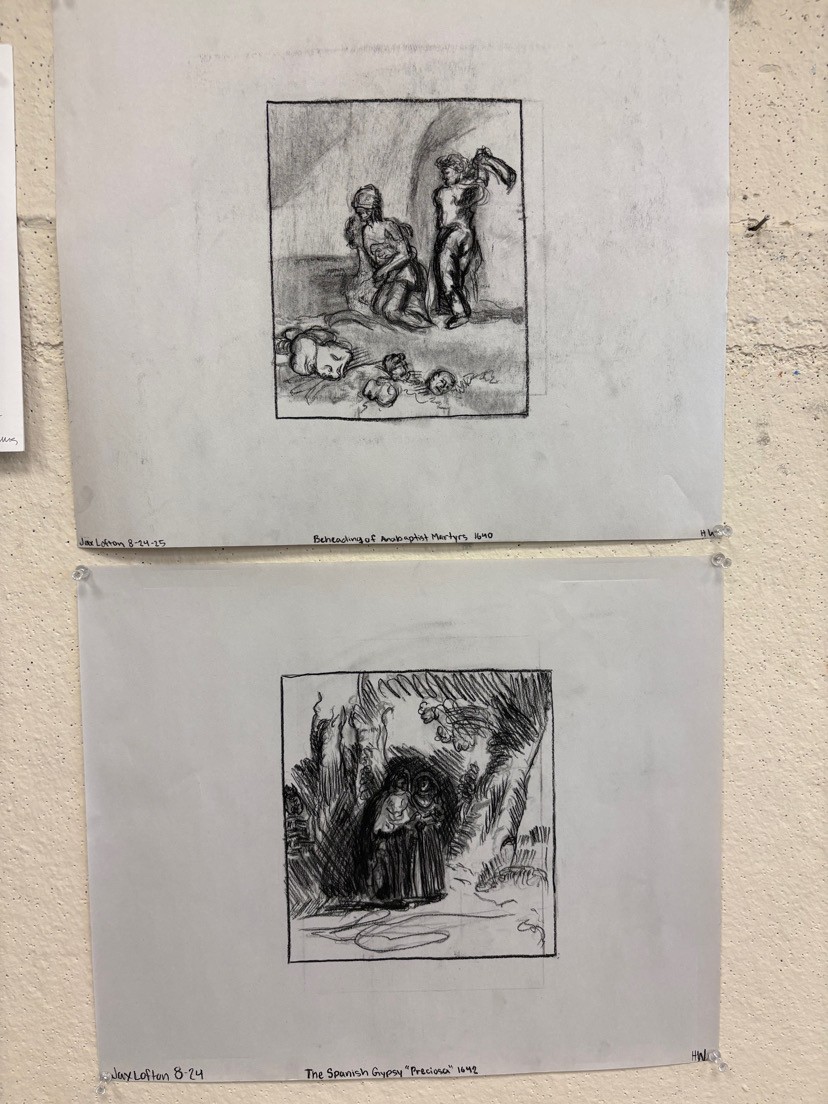Quentin Tarantino’s “The Hateful Eight” delivers the same high-potency, quick-draw drama patrons expect from the cult director. He constructs a powder-keg narrative of eight individuals using the racially- charged atmosphere of the post-civil war era as a fuse. Like patina on fine leather, the cinematic structure borrows from prior Tarantino films, though no one’s complaining. Lengthy dialogue becomes the plot’s ve- hicle, a callback to his 1992’s “Reservoir Dogs” and 1994’s “Pulp Fiction.”
Tarantino assaults the viewer with an arsenal of sensation. Ennio Morricone, whose music is featured in 2009’s “Inglorious Basterds,” 2004’s “Kill Bill Vol. 2” and 2012’s “Death Proof,”created an original western score for the first time in 40 years. Morricone’s contribution did not go unnoticed, as it garnered a Golden Globe for best score on Jan. 10.
Some viewers also had the pleasure of experiencing “The Hateful Eight” as one of 11 films shot in Ultra Panavision 70mm. 1966’s “Khartoum” was the last film to use this rare process. The limited release in 100 theatres nationwide debuted the film in glorious wide-aspect shots. Reviving a technology from the 1950s al- lowed the film to expand beyond the screen and create an immersive experience.
Despite the police boycott of the film after Tarantino’s attendance at a Black Lives Matter rally, the box office numbers remain solid. Since the film’s limited release Dec. 25 and wide release Dec. 30, “The Hateful Eight” has grossed over $65 million worldwide. Tarantino’s reputation precedes him. As a director, he needs only his name to secure theatre attendance.
The film begins with a wide shot of a snow-covered Wyoming. No stranger to a Tarantino party, Samuel L. Jackson as Major Marquis Warren appears sitting saddled atop three corpses. Jackson’s presence interrupts the passage of the Hang Man’s (Kurt Russell) carriage, reminiscent of Tarantino’s 2012 film “Django Unchained,” when Dr. Shultz’s (Christopher Waltz) carriage interrupts the slave procession harboring Django. The Hangman’s captive is no slave but is rather a prisoner named Daisy Domergue (Jennifer Jason Leigh) with a pricey bounty.
Tarantino spreads violence across the film’s length, an effortless seam in an unravelling Tarantino picture. The film, never threadbare in its share of blood and gruesome scenes, gives the viewer the familiar pang of uneasiness. The discomfort resonates with every resounding blow to Domergue’s head.
The apprehension continues as more characters appear. With the introduction of Chris Mannix (Walton Goggins), the racial tensions flare between Goggin’s Southern-boy ren- egade and Jackson’s ex-Union officer. Four more offhanded characters—a confederate general, an executioner, a creepy guy in the corner and a Mexican with a half-believable accent—make the right conditions for an extremely tense three hours. There is an eloquence to Tarantino’s ability to give viewers panic. I momentarily had to put my nachos down due to the amount of blood on screen.
His humor hits harder than Russell’s elbow can smack Leigh in the face. A brilliant flash of Tarantino’s wit rises with the broken latch on the cabin door gag—each repetition more com- ical than the last. Here’s where you find yourself transfixed and at the mercy of another one of Tarantino’s carefully crafted skills: immersion. He engages the viewer in the joke with repetition and subtly implores the audience to participate in the experience.
Although Tarantino incorporates similar structural devices in his prior works, “The Hateful Eight” doesn’t deliver the same caliber of stylistic approach.
The same raw antics and dialogue are present throughout the film, yet the characters lack their usual depth and development. Tarantino’s brilliant use of motifs, such as a letter handwritten by Abraham Lin- coln to Major Warren, carry the plot forward.
The Lincoln Letter serves as a foothold for Warren, helping him establish credibility as a black man in the post-civil war era. The letter serves one purpose: to disarm white people. Yet Tarantino’s use of this foothold raises questions about modern society. What Lincoln Letter do minorities carry around today?
Though I left the theater disappointed, I haven’t been able to stop thinking about the film. Those who appreciate the nuances of his work will only want to see the film again. Tarantino did his job, though “a basterd’s job is never done.”
































